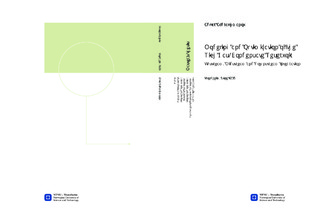| dc.description.abstract | Simulation and Optimization of the production assets occurs in several and various cycles.Those are: "Field Management", "Production Optimization" and "Operation Efficiency". Decisions making process obviously based on analyzing of those cycles. "Field Management" cycle is a multidisciplinary, detail numerical modeling of the Reservoir, Field Facility (Wells&Pipelines) and Surface(Separator++) Facility. "Production Optimization" involves analysis of production data and numerical simulation and optimization of the well such as Nodal analysis etc to get better understanding of the well characteristic in order to optimize the production. "Operation Efficiency" is a daily monitoring and surveillance activities of the field data. Composition stream from reservoir to the market has been obtained as a result of upstream, midstream and downstream retrograde gas-condensate models integration. Applications are composition, Peng-Robinson EOS has been chosen as a fluid package. A simple retrograde gas-condensate reservoir model has been designed for the integration process using SENSOR. Homogeneous reservoir 27x27x4 with a constant permeability and porosity, with layers thickness variation has been produced using six producers and four injectors in 15 years. Production is centered on the main process LNG plant. Small water compressibility makes aquifer insignificant that restrict the gas trapping effect. Different production scenarios were observed to define development strategy for rich gas condensate production. VGD and C/V gas drive mechanisms have been applied by dry gas cycling to enhance condensate production. Condensate production is constrained by TFGR. Production model has been designed symmetrically using natural produced, choke controlled vertical wells using steady state flow simulator PIPESIM. During gas production, most common problem is "Liquid Loading" phenomena therefore Critical Gas Rate has been determined to avoid liquid collection and back pressure effect. Production strategy has been defined using the reservoir depletion and mole composition productions from the Upstream. Simplified "Cascade" LNG process plant has been mounted using thermodynamic process simulator HYSYS. The model consist from the Separation, Dehydration, CO2 Extraction and NGL and LNG production units. Optimization was done by using hysys's optimization capabilities. Products dewpoint specification have been obtained by separating condensate during separation process, cooling and compressing separated gas, absorption by TEG. NGL and LNG production occurs through Propane pre-cooling, Compression train with Ethylene cooling and finally methane cooling. NGL occurs on compression train directed to the NGL tank. IAM has been designed for accurate gas-condensate assets prediction, long term forecasting, filed development planning and modeling - optimization studies using PIPE-IT. The model consist of Upstream, midstream and downstream composition applications. Integration has been done in a sequence. Upstream has been integrated with downstream using Ruby script. Midstream was integrated into the downstream process model by using Ustream link. IAM provides flexibility in global problem solving and decision making process. This master thesis evaluates the optimal development strategy for the rich gas-condensate production problem. IAM provides the long term composition forecast for gas, condensate, NGL and LNG products. | nb_NO |

